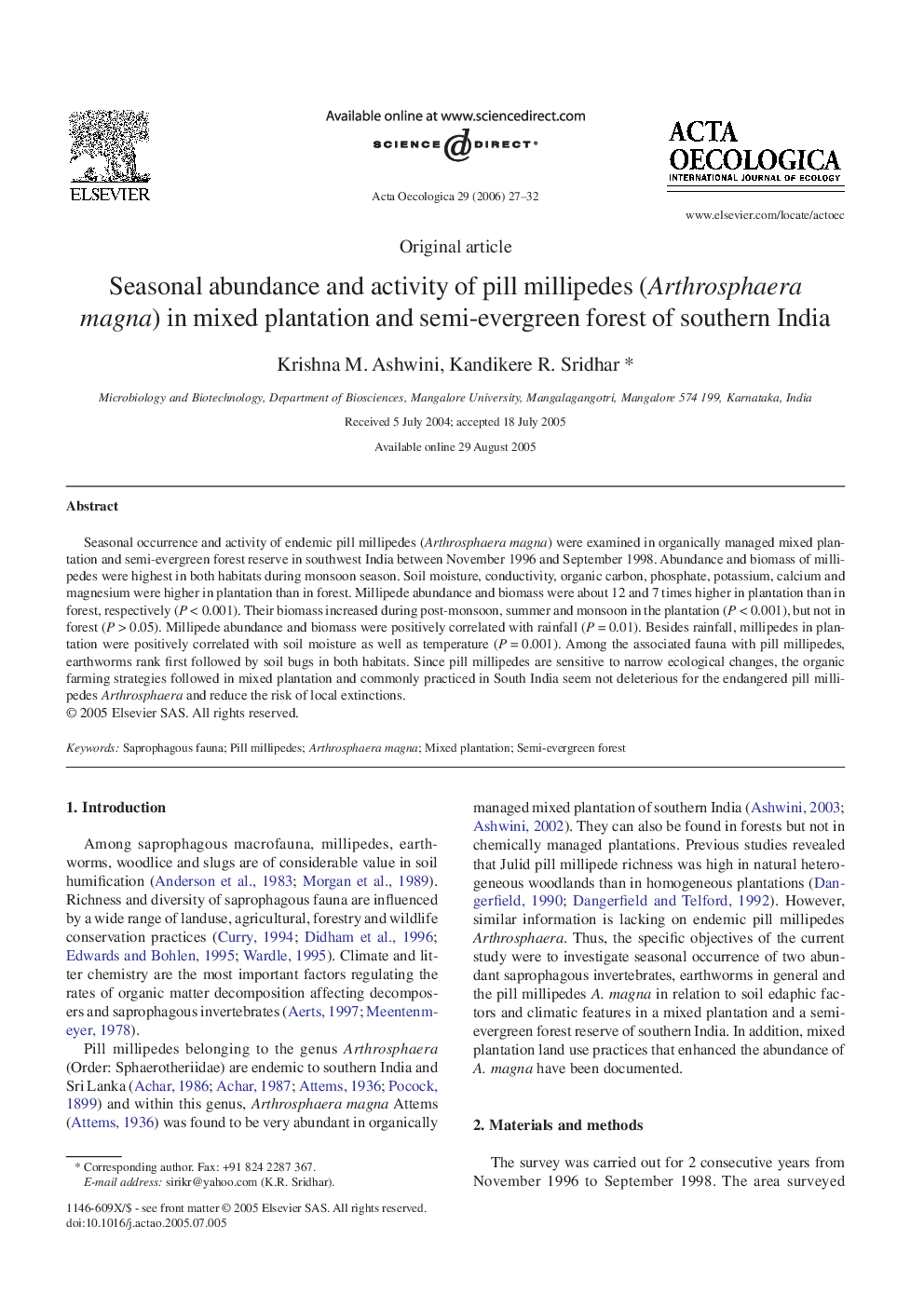| Article ID | Journal | Published Year | Pages | File Type |
|---|---|---|---|---|
| 4381404 | Acta Oecologica | 2006 | 6 Pages |
Abstract
Seasonal occurrence and activity of endemic pill millipedes (Arthrosphaera magna) were examined in organically managed mixed plantation and semi-evergreen forest reserve in southwest India between November 1996 and September 1998. Abundance and biomass of millipedes were highest in both habitats during monsoon season. Soil moisture, conductivity, organic carbon, phosphate, potassium, calcium and magnesium were higher in plantation than in forest. Millipede abundance and biomass were about 12 and 7 times higher in plantation than in forest, respectively (PÂ <Â 0.001). Their biomass increased during post-monsoon, summer and monsoon in the plantation (PÂ <Â 0.001), but not in forest (PÂ >Â 0.05). Millipede abundance and biomass were positively correlated with rainfall (PÂ =Â 0.01). Besides rainfall, millipedes in plantation were positively correlated with soil moisture as well as temperature (PÂ =Â 0.001). Among the associated fauna with pill millipedes, earthworms rank first followed by soil bugs in both habitats. Since pill millipedes are sensitive to narrow ecological changes, the organic farming strategies followed in mixed plantation and commonly practiced in South India seem not deleterious for the endangered pill millipedes Arthrosphaera and reduce the risk of local extinctions.
Keywords
Related Topics
Life Sciences
Agricultural and Biological Sciences
Ecology, Evolution, Behavior and Systematics
Authors
Krishna M. Ashwini, Kandikere R. Sridhar,
